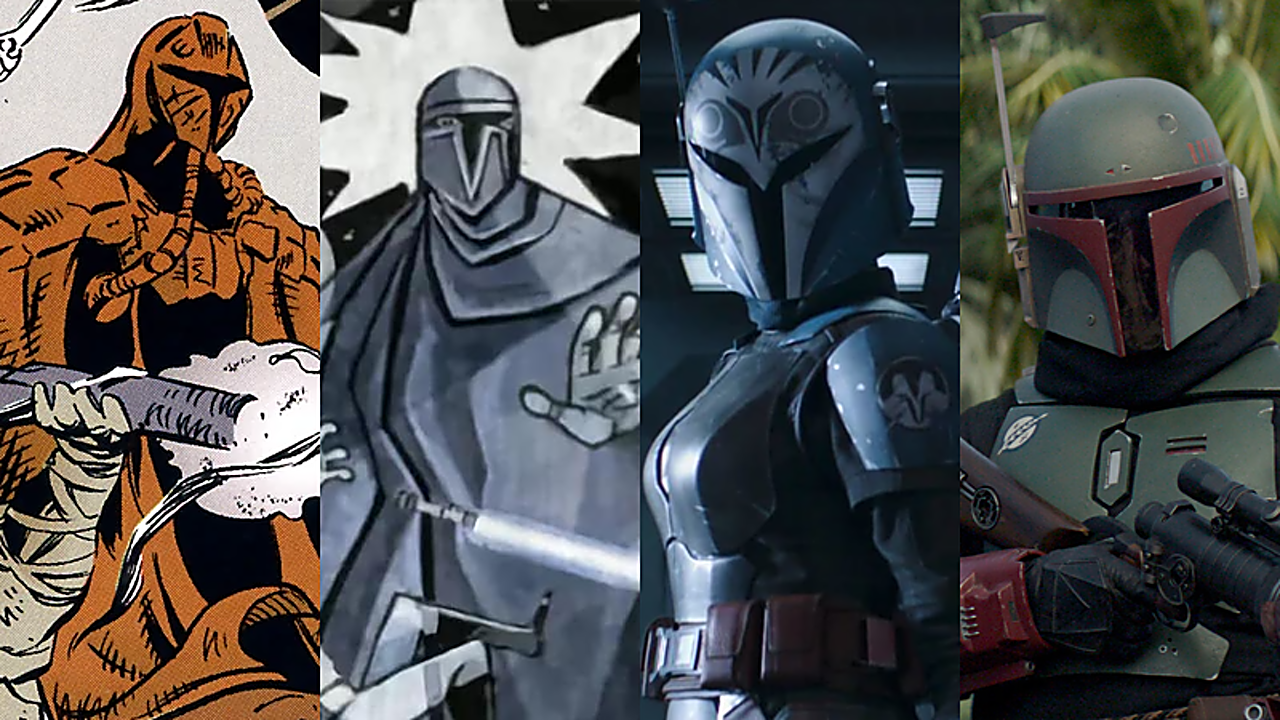Do You Know The History Behind Mandalorian Armor?
"This is the Way"
Mandalorians are among some of the coolest and most interesting characters in Star Wars, starting with the introduction of Boba Fett in The Empire Strikes Back (or technically the Star Wars Holiday Special if you want to go that route). From his brief appearances in The Empire Strikes Back and Return of the Jedi, Boba Fett became an iconic character, primarily because of his costume and appearance, with his unique armor and weapons.
With the advent of the post-Return of the Jedi Legends content, Boba's backstory and, more importantly, the culture and lore of his people, known as Mandalorians, was greatly expanded upon. With the release of the prequel trilogy and The Clone Wars series, Boba's backstory began to be fleshed out in Canon, with his introduction as a young clone of his father, Jango Fett, also a bounty hunter and owner of the Mandalorian armor that would eventually become Boba's.
RELATED: New Report Suggests The Mandalorian Season 3 Will Premiere Late 2022
From there, and throughout The Clone Wars, Rebels, all the way through to The Mandalorian and Book of Boba Fett, Mandalorian culture and lore continues to be expanded in Canon. One of the key elements of the Mandalorian characters that have been introduced to date (aside from the "New Mandalorians," a peaceful group who sought to escape the warlike culture of the past) has been the unique armor worn by Mandalorian warriors and bounty hunters. For Mandalorians, their armor is what a lightsaber is to a Jedi, and the development of their weapons and fighting style is significantly tied to their historic conflicts with the Jedi. Mandalorian armor has a rich and interesting history and lore, which will be discussed in this article.
Mandalorian armor is made out of a durable alloy known as beskar. Beskar is uniquely capable of deflecting not only laser bolts, but also lightsabers, making their wearers impervious to many conventional attacks. Although, as Jango Fett discovered on Geonosis, their armor doesn't necessarily make Mandalorians invincible against the Jedi. The alloy, once plentiful on Mandalore, became harder to obtain due to the Empire's destruction of the planet, in a great purge known as "The Night of a Thousand Tears." The Empire also stole much of it. In The Mandalorian episode, The Sin, Din is paid for his services in beskar, embossed with the Imperial insignia. Din had the beskar melted down for improved armor, a new weapon, and some leftover amount to be given to "foundlings," other Mandalorian orphans.
Some groups of Mandalorians have a creed against beskar being forged into anything other than Mandalorian armor. A beskar spear that Din Djarin acquired during his adventures was later taken to the Armorer and melted down into chain mail for Grogu. Beskar has its origins in Star Wars Legends continuity, but has since become Canon.
Mandalorian armor is forged and decorated in various ways, in accordance with families, or clans as they are known on Mandalore. Mandalorians are most easily recognized by their unique T-Visor helmet, as well as chest plate with a hexagonal design. However, that is where the similarities usually end. The Mandalorian splinter group, Death Watch, sported blue-accented armor, while a breakaway group of Death Watch that was loyal to Darth Maul, instead wore crimson red armor with horns on their helmets in honor of their leader. Although Sabine Wren wore more colorful armor in honor of her unique personality, her clan's traditional armor was white with yellow outlines. Lady Bo-Katan Kryze's helmet is shaped like an owl. As we learned from Boba Fett in Season Two of The Mandalorian, Mandalorian armor can be identified as belonging to a previous clan or owner, which he used to prove to Din that his armor previously belonged to his late father Jango, which he inherited upon his death.
Different groups or clans of Mandalorians have different traditions regarding their armor. The group that rescued and raised Din Djarin, The Children of The Watch, are one of the most conservative groups of Mandalorians. They have a strict code against removing one's helmet under any circumstances, whereas other Mandalorians, such as Bo-Katan and her allies, have no such tradition. Due to events that transpired in Season Two of The Mandalorian, Din was ex-communicated from his small covert of Mandalorians until he completes a pilgrimage to Mandalore. Many Mandalorians have insignias, or "signets", on their shoulder armor that has clan or some other special significance. Boba has a Mythosaur, a Mandalorian creature, as his signet while Din Djarin, in honor of his adventures with Grogu, was given a Mudhorn as his signet.
READ NEXT: Opinion: Should Lucasfilm Be More Open With The 'Star Wars' Fandom?
Source(s): StarWars.com, Looper, GamesRadar.com

